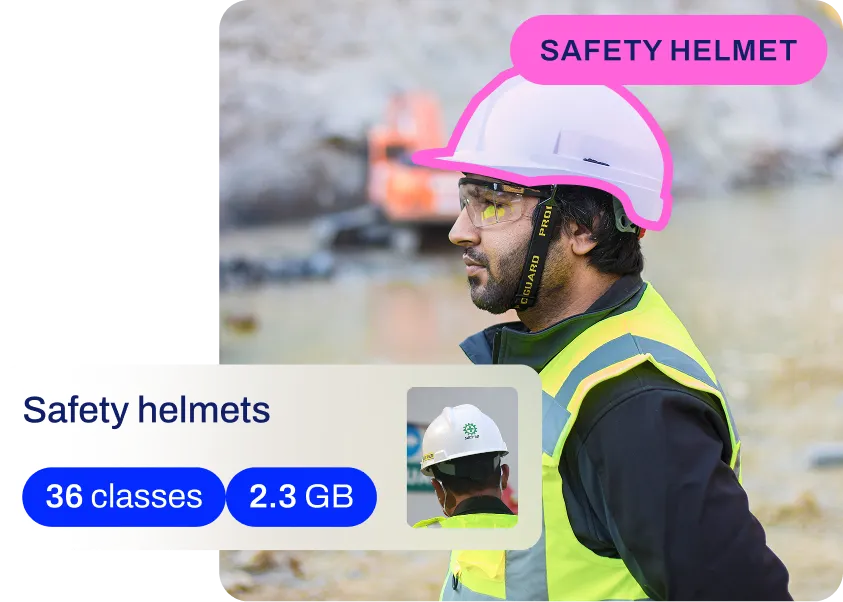Observability
Discover how observability enhances AI/ML systems like Ultralytics YOLO. Gain insights, optimize performance, and ensure reliability in real-world applications.
Observability allows engineering teams to actively debug and understand the internal states of complex systems based
on their external outputs. In the rapidly evolving fields of
Artificial Intelligence (AI) and
Machine Learning (ML), this concept is critical
for moving beyond "black box" deployments. While traditional software testing can verify logic, ML models
operate probabilistically, making it essential to have systems that allow developers to investigate the root causes of
unexpected predictions, performance degradation, or failures after
model deployment.
Observability Vs. Monitoring
Although often used interchangeably, these terms represent distinct approaches to system reliability.
-
Monitoring focuses on the "known unknowns." It involves tracking predefined dashboards
and alerts for metrics like
inference latency or error rates. Monitoring
answers the question, "Is the system healthy?"
-
Observability addresses the "unknown unknowns." It provides the granular data necessary
to ask new, unanticipated questions about why a specific failure occurred. As described in the
Google SRE Book, an observable system
enables you to understand novel behaviors without shipping new code. It answers the question, "Why is the
system behaving this way?"
The Three Pillars of Observability
To achieve deep insights, observability relies on three primary types of telemetry data:
-
Logs: These are timestamped, immutable records of discrete events. In a
computer vision (CV) pipeline, a log might
capture input image dimensions or
hyperparameter tuning configuration.
Structured logging, often in JSON format, facilitates easier
querying by data analysis tools like Splunk.
-
Metrics: Aggregated numerical data measured over time, such as
accuracy, memory consumption, or
GPU utilization. Systems like
Prometheus are widely used to store these time-series data, allowing teams to
visualize trends.
-
Traces: Tracing follows the lifecycle of a request as it propagates through various microservices.
For distributed AI applications, tools compliant with OpenTelemetry can map
the path of a request, highlighting bottlenecks in the
inference engine or network delays.
Why Observability Matters in AI
Deploying models into the real world introduces challenges that do not exist in controlled training environments.
Observability is essential for:
-
Detecting Data Drift: Over time, live data may diverge from the
training data, a phenomenon known as
data drift. Observability tools visualize input
distributions to alert engineers when retraining is necessary.
-
Ensuring AI Safety: For high-stakes domains, understanding model decisions is vital for
AI safety. Granular insights help audit decisions to
ensure they align with safety protocols and
fairness in AI.
-
Optimizing Performance: By analyzing detailed traces,
MLOps teams can identify
redundant computations or resource constraints, optimizing cost and speed.
-
Debugging "Black Boxes": Deep learning models are often opaque. Observability platforms
like Honeycomb allow engineers to slice and dice high-dimensionality data to
pinpoint why a model failed on a specific edge case.
Real-World Applications
Observability plays a pivotal role in ensuring the reliability of modern AI solutions across industries.
-
Autonomous Vehicles: In the development of
autonomous vehicles, observability allows
engineers to reconstruct the exact state of the system during a disengagement event. By correlating
object detection outputs with sensor logs and
control commands, teams can determine if a braking error was caused by sensor noise or a model prediction fault.
-
Healthcare Diagnostics: In
AI in healthcare, trusted operation is
paramount. Observability ensures that medical imaging models perform consistently across different hospital
machines. If a model's performance drops, traces can reveal if the issue stems from a change in image resolution or
a delay in the data preprocessing pipeline, enabling rapid remediation without compromising patient care.
Implementing Observability with Ultralytics
Effective observability starts with proper logging and experiment tracking. Ultralytics models integrate seamlessly
with tools like MLflow,
Weights & Biases, and
TensorBoard to log metrics, parameters, and
artifacts automatically.
The following example demonstrates how to train a
YOLO11 model while organizing logs into a specific project
structure, which is the foundation of file-based observability:
from ultralytics import YOLO
# Load the YOLO11 model
model = YOLO("yolo11n.pt")
# Train the model, saving logs and results to a specific project directory
# This creates structured artifacts useful for post-training analysis
model.train(data="coco8.yaml", epochs=3, project="observability_logs", name="experiment_1")
For production environments, teams often aggregate these logs into centralized platforms like
Datadog, New Relic, or
Elastic Stack to maintain a unified view of their entire AI
infrastructure. Advanced visualization can also be achieved using open-source dashboards like
Grafana.












